Discover the hidden symptoms of sleep apnea and learn how to identify if a driver needs to take a sleep apnea test.
Understanding Sleep Apnea: What You Need to Know
Sleep apnea is a sleep disorder characterized by pauses in breathing or shallow breaths during sleep. It is important to understand the basics of sleep apnea in order to recognize its symptoms and potential impact on drivers. Sleep apnea can be caused by various factors, including obesity, smoking, and family history. It is more common in men and older adults.
During sleep, the muscles in the throat relax, causing the airway to narrow or close. This leads to interruptions in breathing, known as apneas. These apneas can last for seconds to minutes and may occur multiple times throughout the night. As a result, the quality of sleep is disrupted, leading to daytime fatigue and other symptoms.
There are three main types of sleep apnea: obstructive sleep apnea, central sleep apnea, and complex sleep apnea syndrome. Obstructive sleep apnea is the most common form, occurring when the muscles in the back of the throat fail to keep the airway open. Central sleep apnea is less common and involves a failure of the brain to signal the muscles to breathe. Complex sleep apnea syndrome is a combination of both obstructive and central sleep apnea.
If left untreated, sleep apnea can have serious consequences on overall health and well-being. It has been linked to an increased risk of hypertension, heart disease, stroke, and diabetes. It can also significantly impair cognitive function, memory, and concentration, making it particularly dangerous for drivers.
It is estimated that up to 20% of motor vehicle accidents are caused by drowsy driving, with sleep apnea being a major contributor. Recognizing the signs of sleep apnea is crucial in identifying drivers who may need to take a sleep apnea test for the safety of themselves and others on the road.
Common Symptoms of Sleep Apnea
Sleep apnea can manifest in various symptoms, some of which may be subtle and easily overlooked. Common symptoms include loud snoring, gasping or choking during sleep, excessive daytime sleepiness, morning headaches, difficulty concentrating, irritability, and mood changes. These symptoms are often a result of poor quality sleep due to the interruptions in breathing.
It is important to note that not all individuals with sleep apnea will experience the same symptoms. Some may only exhibit one or two symptoms, while others may have a combination of several. Additionally, the severity of symptoms can vary from mild to severe, depending on the individual and the type of sleep apnea.
If you suspect that you or someone you know may have sleep apnea, it is important to consult with a healthcare professional for a proper diagnosis. They can conduct a comprehensive evaluation, which may include a sleep study or other diagnostic tests, to determine if a sleep apnea test is necessary.
The Impact of Sleep Apnea on Driving
Sleep apnea can have a significant impact on driving performance and safety. The excessive daytime sleepiness and reduced cognitive function associated with sleep apnea can impair a driver's ability to stay alert and react quickly on the road. Studies have shown that individuals with untreated sleep apnea are more likely to be involved in motor vehicle accidents.
In addition to the increased risk of accidents, sleep apnea can also affect a driver's ability to obtain or maintain a commercial driver's license (CDL) in some jurisdictions. Certain medical regulations require individuals with sleep apnea to undergo regular testing and treatment to ensure they are fit to drive commercial vehicles.
It is important for drivers to be aware of the potential impact of sleep apnea on their driving abilities and take appropriate measures to address the condition if necessary.
Identifying the Signs: Does a Driver Need a Sleep Apnea Test?
Identifying whether a driver needs to take a sleep apnea test involves recognizing the signs and symptoms mentioned earlier. If a driver exhibits any of the common symptoms of sleep apnea, such as loud snoring, excessive daytime sleepiness, or morning headaches, it is advisable to consult with a healthcare professional.
The healthcare professional will evaluate the individual's medical history, conduct a physical examination, and may recommend a sleep study or other diagnostic tests to confirm the presence of sleep apnea. Based on the results, they can determine if a sleep apnea test is necessary.
It is important to note that only a healthcare professional can diagnose sleep apnea and recommend appropriate treatment. Self-diagnosis or relying solely on online assessments is not sufficient and can lead to inaccurate conclusions.
Taking Action: Steps for Diagnosing and Treating Sleep Apnea
If a driver is diagnosed with sleep apnea, there are several steps that can be taken to manage the condition and ensure safety on the road. The most common treatment for sleep apnea is continuous positive airway pressure (CPAP) therapy. This involves wearing a mask over the nose or mouth during sleep, which delivers pressurized air to keep the airway open.
Other treatment options may include oral appliances that help keep the airway open, lifestyle changes such as weight loss and regular exercise, and surgery in certain cases. The specific treatment plan will depend on the severity of the sleep apnea and the individual's overall health.
Regular follow-up appointments with the healthcare professional are important to monitor the effectiveness of the treatment and make any necessary adjustments. It is also important for drivers to comply with treatment recommendations and use any prescribed devices consistently, especially when driving.
By taking action and addressing sleep apnea, drivers can improve their sleep quality, reduce the risk of accidents, and ensure the safety of themselves and others on the road.

.png?width=500&height=500&name=Blue%20and%20White%20Classic%20Shield%20Financial%20with%20Star%20Logo%20Design%20(1).png)


